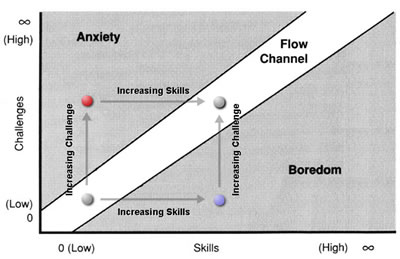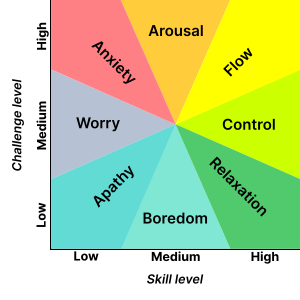Presentations are stressful, even having done many of them throughout my career I can still feel the butterflies. So often they are not much fun to produce and often prove difficult to listen to as an audience, especially if they crank up the heating and darken the room. I am sure I am not the only one to nod off. One of the biggest issue with presentations is that the presenter has something important to say, in their minds, and wants to have his audience walk away with that thought in their heads. Sadly though he cannot be certain how effective he is at getting the idea across the chasm. Well certainly there are no guarantees, of how you can better accomplish this, however there are some consideration you can plan against that should increase your likelihood of having success.
The first thing to realize is that you have an idea in your head that makes a lot of sense and probably seems simple to you, but the audience cannot hear that tune playing as well as you can. Consideration should be given to how to simplify your message. Get to the core of the take away sentence you would want the audience to remember if they remembered nothing else. This is really one of the most important parts of any presentation the core.
How might you go about planning this? Well interestingly enough when I worked on a presentation application for Electric Rain, we came up with the acronym CORE, that stood for Collect, Organize, Refine and Express. The concept was that early on as you plan your presentation you go about collecting together the elements of what you think you might like to cover in your talk. After discovering all the things you think relevant and placing together somewhere you can see them, you can go about organizing those elements into groupings, maybe major topics, or statements with visual impact. Once you have things grouped and clustered together, you can start to refine your message down to the story, and this is really one of the most powerful tools you can use in presenting. This is moving through the refining stage to the express part of the workflow. Storytelling helps makes things stick better in the mind. It acts, as Dan and Chip Heath, writers of Made to Stick would say, like Velcro in your memory. Giving more touch points for your audience to recall later. We already know how powerful storytelling can be in branding and many of the tools of branding can be applied in presentations. They after all have very similar goals of retention and impact.
I suggest some other important things to consider are, keeping your introduction short. No need to bore the audience with your company history or whose basement you started in, if that isn't the goal of your message. Use striking unexpected slides, to wake the audience from repetitive content and boring parts of the talk, add a sense of pacing with high and low moments of emotional impact. Simplicity is key, both to the actual slides themselves as well as the talk. Try and make the visual support the key moments in the talk, they should support each other. Don't over estimate the audiences ability to recall what you say later. Keep what you can down to single statements, think of them as headlines. Using metaphors can be a nice touch in a presentation, whether for the whole talk or just individual slides, but be careful of cultural differences and make sure the metaphor doesn't have a negative consequence that comes along with it.
So my summary for a better presentation is:
1. Keep it Simple
2. Get to the CORE of you message quickly and work to make it sticky
3. Refine and reduce where possible, distill your ideas to headlines
4. Use stories to get more Velcro attachment in the minds of the audience
5. Relax and be engaged with the audience, do not read scripts, talk to the people in the audience.
Geoffery James, outlines some other important reminders before and after a presentation that are also important in some cases.
Presentation
- Check your equipment ... in advance. If you must use PowerPoint, or plan on showing videos or something, check to make sure that the setup really works. Then check it again. Then one more time.
- Speak to the audience. Great public speakers keep their focus on the audience, not their slides or their notes. Focusing on the audience encourages them to focus on your and your message.
- Never read from slides. Guess what? Your audience can read. If you're reading from your slides, you're not just being boring–you're also insulting the intelligence of everyone in the room.
- Don't skip around. Nothing makes you look more disorganized than skipping over slides, backtracking to previous slides, or showing slides that don't really belong. If there are slides that don't fit, cut them out of the presentation in advance.
- Leave humor to the professionals. Unless you're really good at telling jokes, don't try to be a comedian. Remember: When it comes to business presentations, polite laughter is the kiss of death.
- Avoid obvious wormholes. Every audience has hot buttons that command immediate attention and cause every other discussion to grind to a halt. Learn what they are and avoid them.
- Skip the jargon. Business buzzwords make you sound like you're either pompous, crazy, or (worst case) speaking in tongues. Cut them out–both from your slides and from your vocabulary.
- Make it timely. Schedule presentations for a time when the audience can give you proper attention. Avoid end of day, just before lunch, and the day before a holiday.
- Prepare some questions. If you're going to have a Q&A at the end of your presentation, be prepared to get the ball rolling by having up a question or two up your sleeve.
- Have a separate handout. If there's data that you want the audience to have, put it into a separate document for distribution after your talk. Don't use your slide deck as a data repository.
















